Day Two started at 0700 with the Moose Jaw Road Manager picking me up and driving me along the Weyburn Sub. Sadly, as we drove through Rouleau, it was still dark and I was unable to take pictures of the “Dog River” grain elevator, water tower or the set that serves as the gas station for Corner Gas. It was also dark on the way back (and blizzarding) but I did catch the “Foo Mar T” store front. The production company apparently sends their schedule to the railway in the sad hopes that the CPR will run trains outside of the shooting schedule. However, the railway stops for no man (just one little dog). The Weyburn Sub runs along the highway so even in a truck I was able to view the many station name signs that until now I only knew as names and identifiers on my train sheet. Many of these places are, in fact, towns and I realized that Alberta is losing a lot of its small-town Canadiana because of the boom. Even on the drive to Cold Lake it seems that every town looks very much like another without any of the small local businesses that used to exist but in Saskatchewan this culture seems to be alive and well. Rouleau needs very little tweeking to make it look like it does on Corner Gas.
The station at Estevan is interesting. Once a proper passenger station like every community had in the 1930s through 70s, it is now just a building used as a local office for the railway. It's rundown and there's graffiti on the bathroom walls but there are signs of its former glory. An SBU sits on one of the beautiful wooden waiting room benches and the baggage room looks very much the same as in archival footage save for the storage of the ES crews equipment on the shelves instead of luggage.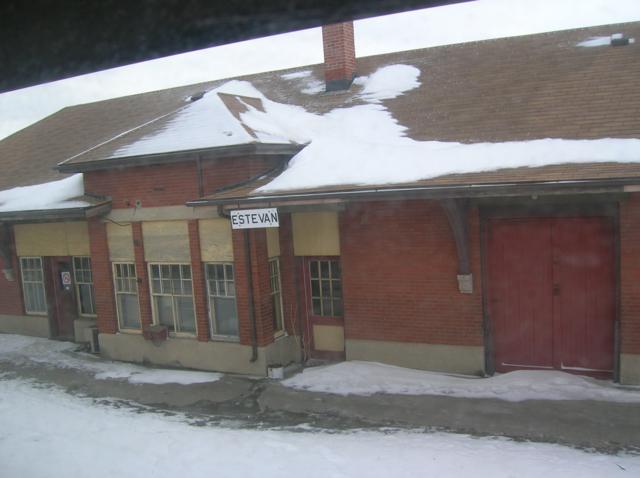
I boarded the 451 just outside of North Portal for the ride back to Moose Jaw. This crew works what is known as an Assignment. The crew is always the same and more or less knows when they go to work. They also generally have a lot of work on line. Trains like this just don't bullet down the line from point A to point B they stop at various locations where they either pick up or set off cars.
This was an integral part of the trip for me as it gave me a very clear idea of what a crew is doing when they tell me that they are spotting or lifting cars. For instance, I got to see the crew detach the engines from the rest of the train and then run “light engines” backward to pick up a bunch of cars, then run forward again and then back, once again, onto the rest of the train. It was done a few times on the way home and it was key to understanding my new job.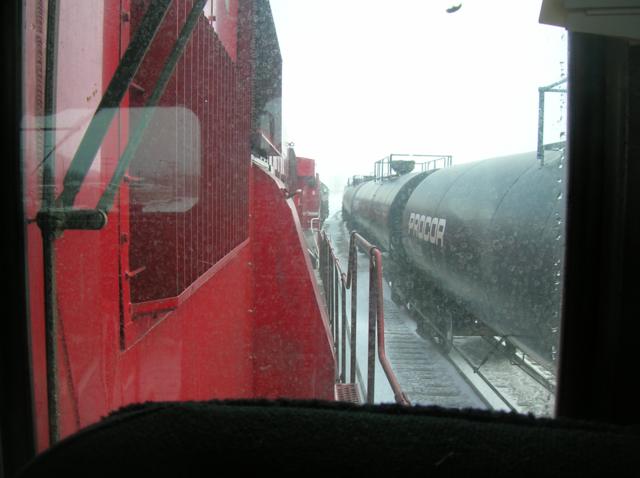
The weather was terrible and I thought the conductor was an awfully good sport to not be in a bad mood when doing all that switching in pretty much blizzard conditions. I was glad we were on rails and not the highway. It was another good lesson in how much longer things can take on the road when the weather isn't cooperating.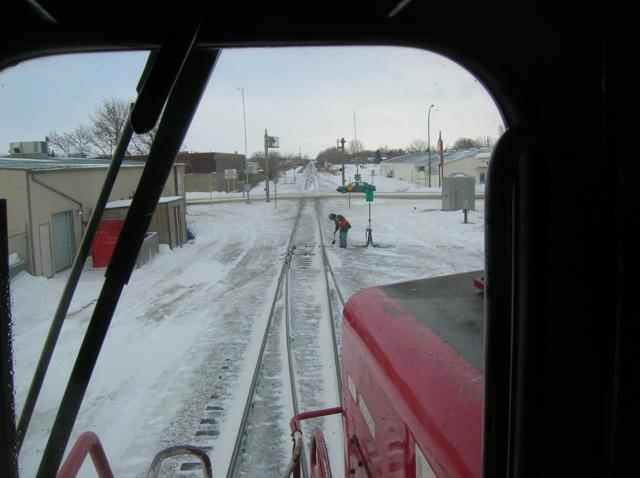
People blow through crossings at an alarming rate. The picture below show people crossing while the train I'm on is moving. To conteract public indignation when there is a crossing accident, new engines are fitted with cameras.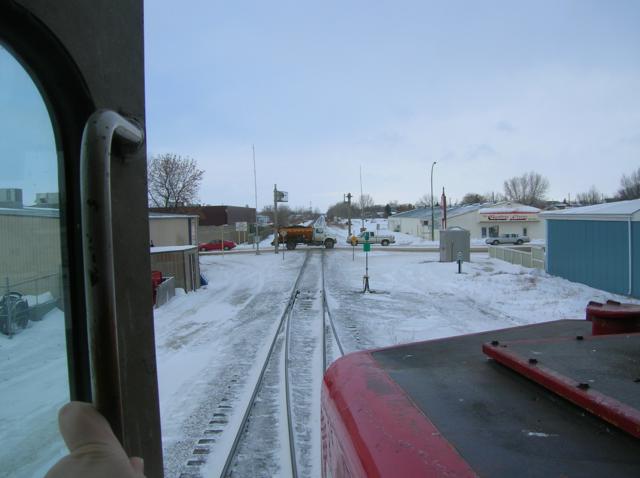
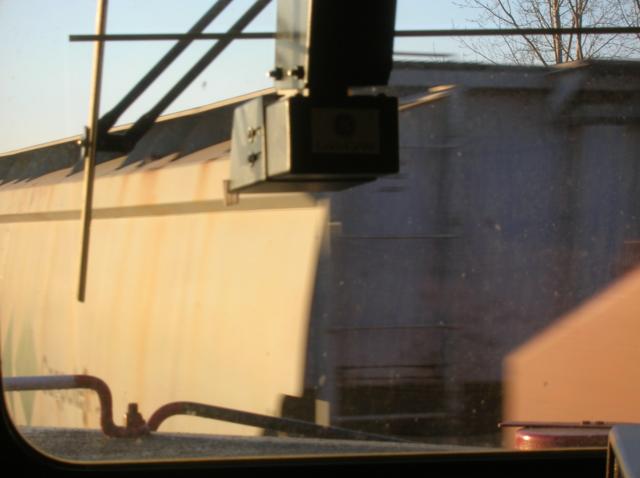
We arrived at the station around 2000 hrs. I thankfully went back to my hotel for dinner and a nice hot bath.